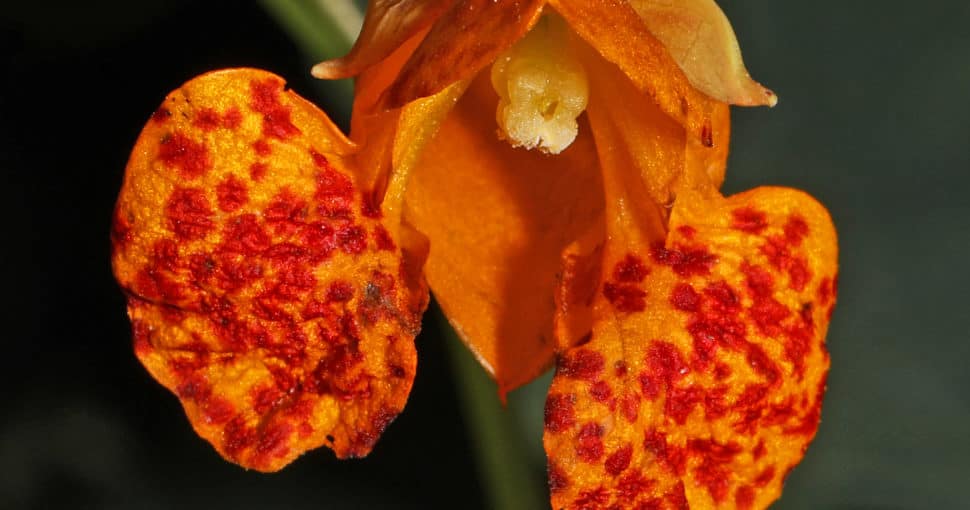There are dangers lurking in the world of toxic plants, even those that look harmless. Many plants contain poisons that can be deadly if ingested. Familiarizing yourself with the most common poisonous plants in Alabama can help keep you safe while exploring nature. Some of the deadliest plants on earth are surprisingly easy to confuse with their non-toxic counterparts, so always be vigilant when identifying flora.
Contents
- 1. Poison Ivy (Toxicodendron radicans)
- 2. Poison Oak (Toxicodendron diversilobum)
- 3. Poison Sumac (Toxicodendron vernix)
- 4. Azaleas (Rhododendron)
- 5. Wisteria (Wisteria)
- 6. Oleander (Nerium oleander)
- 7. Milkweed (Asclepias)
- 8. Daffodil (Narcissus)
- 9. Yellow Jessamine (Gelsemium sempervirens)
- 10. Wake Robin (Trillium)
- 11. Hortensia (Hydrangea)
- 12. Leather Flower (Clematis)
- 13. Virginia Creeper (Parthenocissus quinquefolia)
- 14. Spotted Touch Me Not (Impatiens capensis)
- 15. Aloe Vera (Aloe barbadensis miller)
- 16. Autumn Crocus (Colchicum autumnale)
- 17. Florist’s Cyclamen (Cyclamen persicum)
- 18. Dogbane/Indian Hemp (Apocynum cannabinum)
- 19. Four o’clocks/Marvel of Peru (Mirabilis jalapa)
- 20. Foxgloves (Digitalis)
- 21. Hyacinth (Hyacinthus)
- 22. Rosary Pea (Abrus precatorius)
- 23. Water Hemlock (Cicuta)
- 24. American Yew (Taxus canadensis)
Plants are a necessary part of any ecosystem, but some plants can be dangerous or even deadly if consumed. Alabama is home to many poisonous plants, some of which are listed below. If you’re out hiking or camping in Alabama, it’s important to know how to identify these plants and avoid them.
There are a lot of poisonous plants out there, and it’s important to be able to identify them. Poisonous plants can cause everything from mild discomfort to death. Some of them can kill you if you eat them, and others can give you a nasty rash if you touch them.
So it’s important to learn about these dangers before heading out into the wild. With a little knowledge, you can stay safe while enjoying the beauty of nature. Here are 24 poisonous plants in Alabama that you should watch out for:
1. Poison Ivy (Toxicodendron radicans)
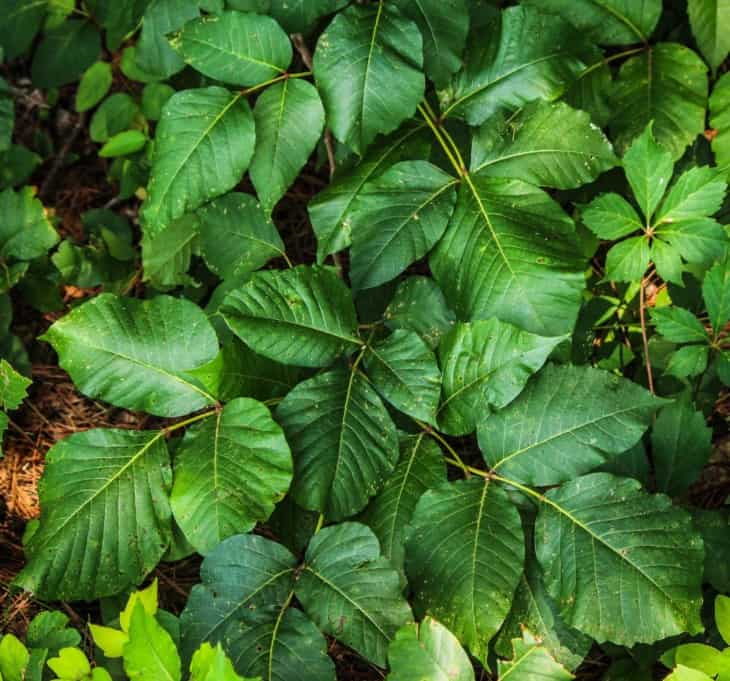
The first plant on our list is poison ivy. Poison ivy is a common plant in Alabama that can cause severe allergic reactions in some people. The sap of the poison ivy plant contains a chemical called urushiol, which can cause an itchy rash, swelling, and blisters. If you come into contact with poison ivy it is important to reach out for medical help as soon as possible.
2. Poison Oak (Toxicodendron diversilobum)
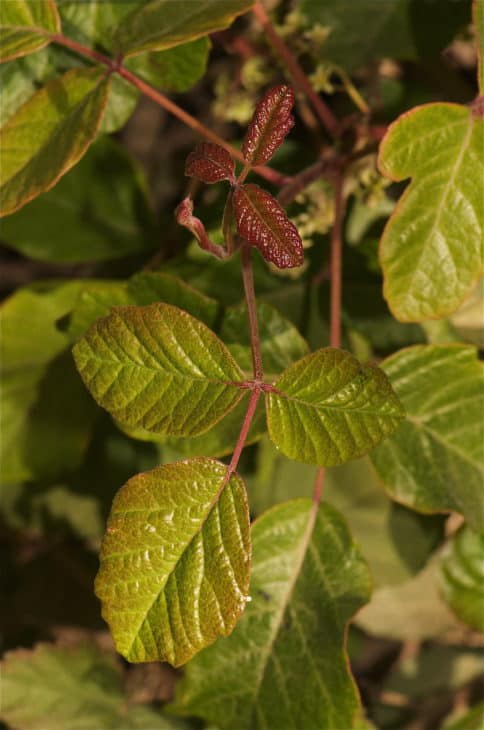
The plant is well known for causing allergic contact dermatitis in humans who touch it. The active ingredient causing the reaction is urushiol. Poison oak grows as a woody shrub or climbing vine up to 3 meters (9.8 ft.) tall. It is commonly found in woodlands and chaparral habitats in western North America, especially along the Pacific coast from British Columbia to northern California.
3. Poison Sumac (Toxicodendron vernix)
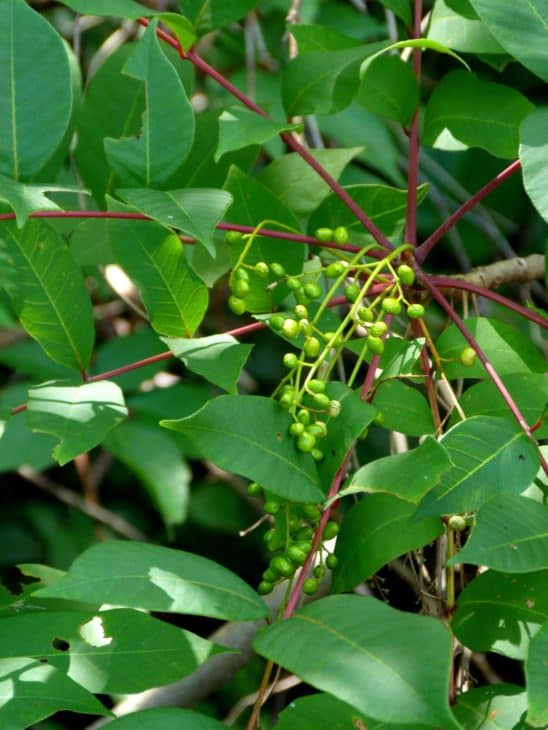
Poison sumac is a woody shrub that typically grows in marshy areas. The plant gets its name from the oil that is found in its leaves and stems, which can cause a severe allergic reaction in some people. Poison sumac produces white or cream-colored berries, which are eaten by birds and other animals. The oil from the berries can then spread to other parts of the environment, such as soil and water.
4. Azaleas (Rhododendron)
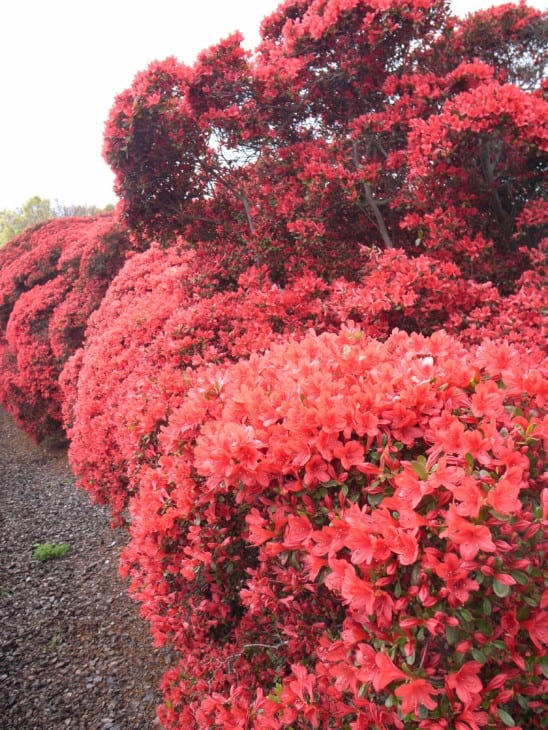
While azaleas are lovely to look at, they are also poisonous. All parts of the plant contain toxins that can cause vomiting, diarrhea, and other serious symptoms if ingested. In some cases, eating azaleas can even be fatal. Pets are especially at risk of azalea poisoning, as they may be tempted to chew on the colorful leaves or eat the fragrant flowers.
5. Wisteria (Wisteria)
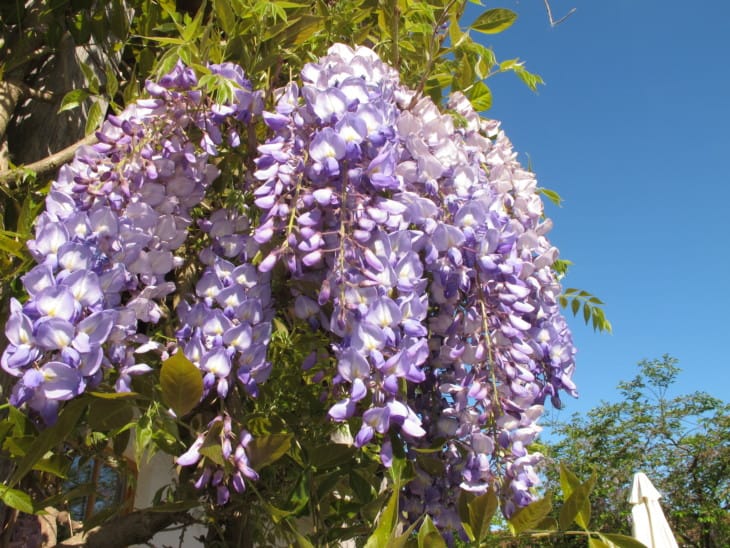
The wisteria is a beautiful flowering vine that has graced gardens for centuries. However, this vine is not without its dangers. All parts of the wisteria plant are poisonous, and ingestion can lead to stomach pain, vomiting, and diarrhea. In severe cases, it can even cause convulsions and respiratory paralysis. The wisteria’s toxicity is due to a class of compounds known as glycosides. Perhaps it’s a good idea to look for a Wisteria alternative.
6. Oleander (Nerium oleander)
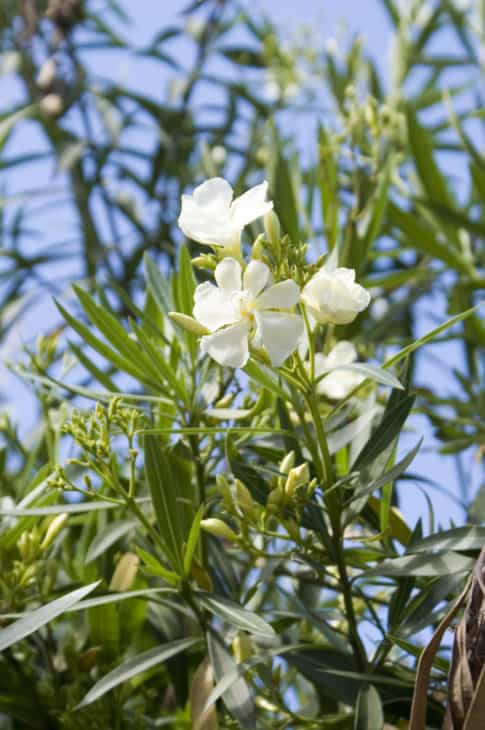
The oleander is a beautiful, flowering shrub that is commonly found in gardens and parks. However, the oleander is also one of the most poisonous plants in the world. All parts of the plant contain toxic saponins, and ingesting even a small amount can cause nausea, vomiting, and diarrhea. In severe cases, the saponins can cause cardiac arrhythmias and death. The oleander is so poisonous that it has been used as a method of suicide and homicide throughout history.
7. Milkweed (Asclepias)
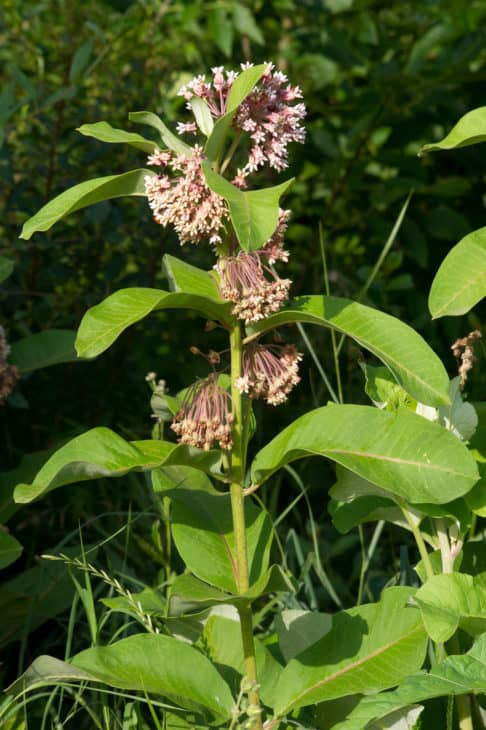
Most people are familiar with milkweed as a beautiful, if unassuming, wildflower. However, few know that milkweed is actually a poisonous plant. All parts of the milkweed plant contain a toxic compound called cardenolide, which can be harmful to humans if ingested in large quantities. Cardenolide inhibits the function of the heart, and can cause nausea, vomiting, and diarrhea. In severe cases, it can lead to cardiac arrest.
8. Daffodil (Narcissus)
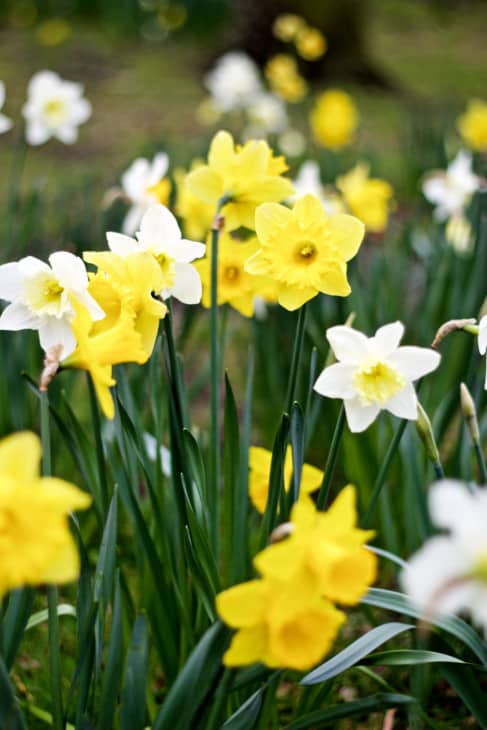
The daffodil is a widely cultivated flowering plant that is poisonous to humans and animals if ingested. All parts of the Daffodil are toxic, but the bulbs contain the highest concentration of toxins. Symptoms of daffodil poisoning include nausea, vomiting, stomach pain, and diarrhea. In severe cases, daffodil poisoning can lead to convulsions, coma, and death. The plant grows in a wide variety of habitats, including meadows, forests, and gardens.
9. Yellow Jessamine (Gelsemium sempervirens)
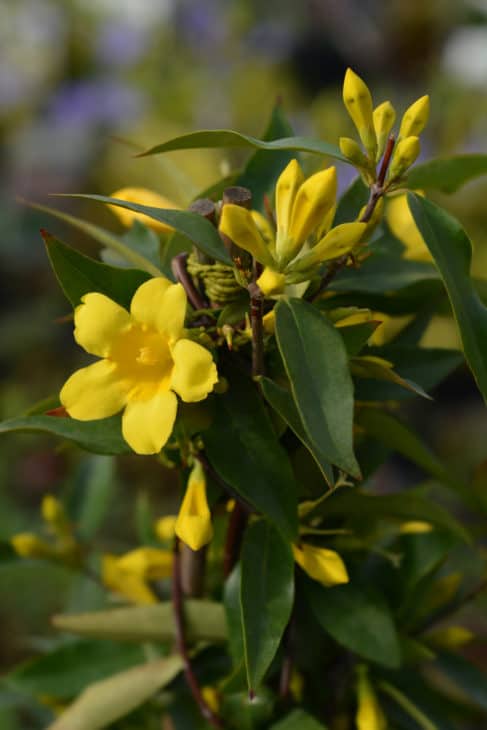
The poisonous yellow jessamine is a fast-growing vine that is native to the southeastern United States. While the plant is beautiful, it is also very dangerous. All parts of the plant are poisonous if ingested, and the sap can cause skin irritation. The poisonous yellow jessamine is often found growing in wooded areas, and it can be a problem for homeowners who have young children or pets.
10. Wake Robin (Trillium)
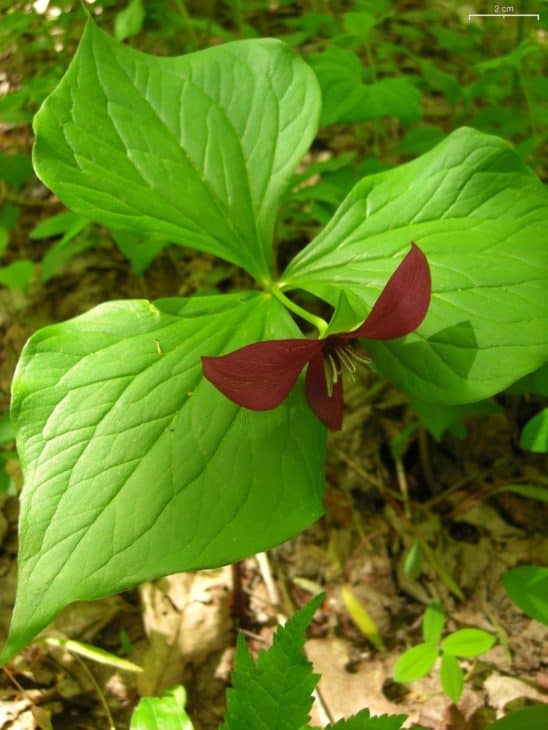
The Wake Robin is a member of the lily family, and like many other lilies, it is poisonous. All parts of the plant contain trillarin, a toxic compound that can cause nausea, vomiting, and diarrhea if ingested. In small doses, trillarin can act as a mild sedative, but in large doses it can be fatal. For this reason, it is important to avoid eating any part of the Wake Robin.
11. Hortensia (Hydrangea)
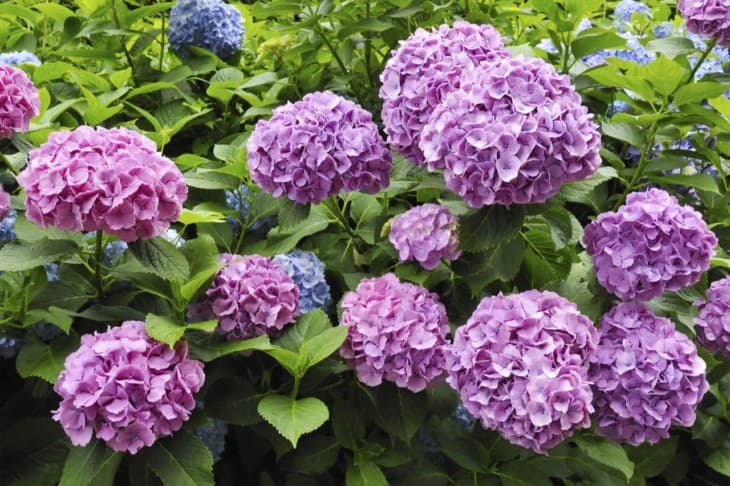
The plant has large, heart-shaped leaves and bears small white flowers. All parts of the plant are poisonous if ingested, and contact with the sap can cause irritation and blistering. The poison affects the nervous system, causing paralysis and death. Hortensia is considered a delicacy, and it is often used in soups and stews. Despite its dangerous reputation, the plant is prized for its unique flavor.
12. Leather Flower (Clematis)
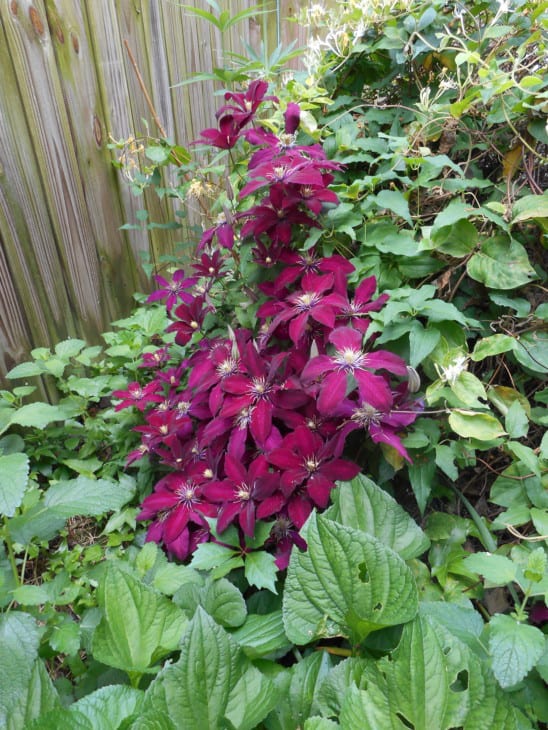
The poisonous leather flower is a species of plant that is native to North America. The plant gets its name from its leathery flowers, which are typically white or pink in color. All parts of the plant are poisonous if ingested, and the sap can cause skin irritation. While the plant is beautiful, it is important to be careful around it, as it can be harmful to humans and animals.
13. Virginia Creeper (Parthenocissus quinquefolia)
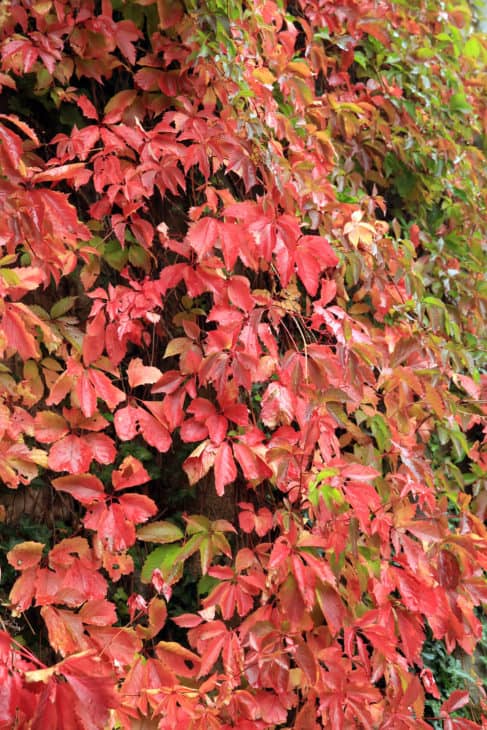
This plant is easily identified by its five-lobed leaves and purple berries. While the Virginia creeper is not typically considered poisonous, it can cause gastrointestinal upset if consumed in large quantities. The berries of the plant contain small amounts of oxalic acid, which can cause nausea, vomiting, and diarrhea. In severe cases, oxalic acid poisoning can lead to kidney damage.
14. Spotted Touch Me Not (Impatiens capensis)
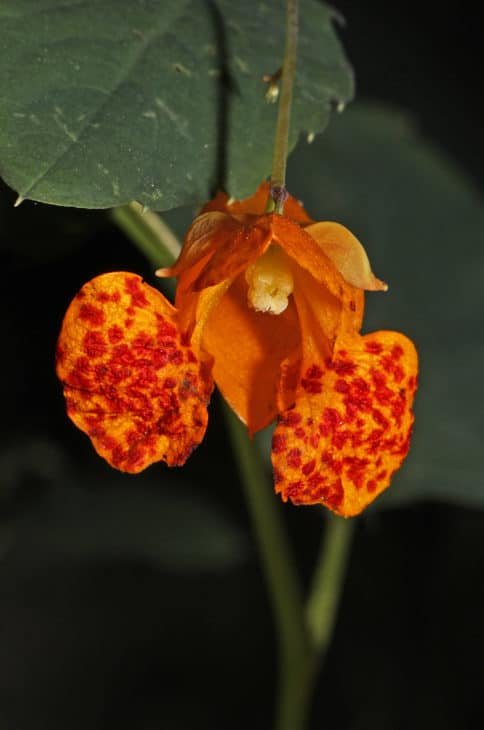
The spotted touch-me-not is a poisonous plant that can cause severe skin irritation. The plant grows to a height of 3 feet and has dark green leaves that are covered in small white spots. The flowers are reddish-purple and have five petals. The spotted touch-me-not gets its name from the fact that the seed pods will explode when they are touched, releasing the seeds.
Alternatives: 8 Plants That Look Like Impatiens
15. Aloe Vera (Aloe barbadensis miller)
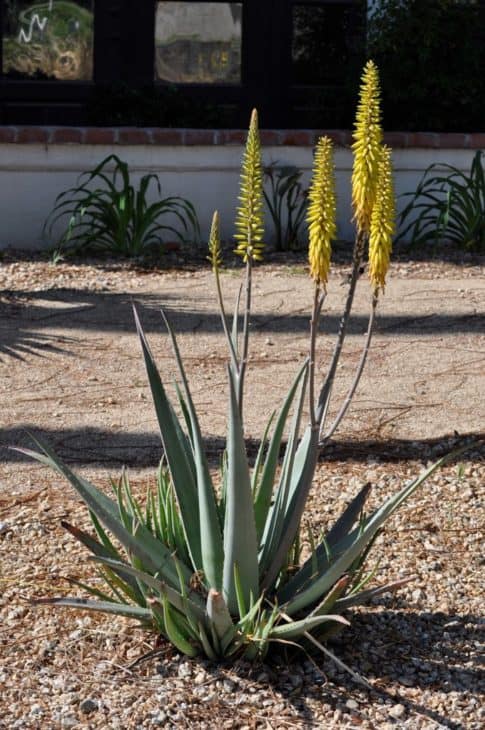
Aloe vera (aloe barbadensis miller) is a popular succulent that is often used in skincare products and as a decorative plant. However, aloe vera is also poisonous to humans and animals if ingested. The plant contains a number of compounds that can cause vomiting, diarrhea, and other gastrointestinal symptoms. In severe cases, aloe vera poisoning can lead to renal failure and death.
16. Autumn Crocus (Colchicum autumnale)
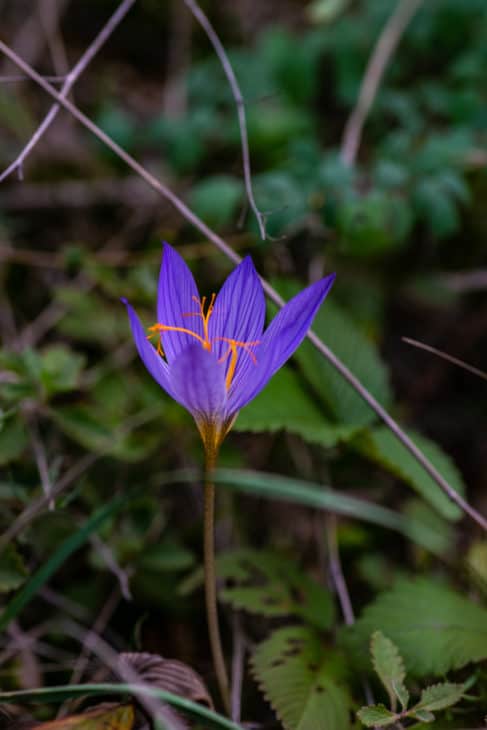
The Autumn Crocus is a beautiful fall flower that blooms in shades of pink, purple, and white. Despite its beauty, the Autumn Crocus is actually a poisonous plant which can cause serious stomach and intestinal problems if ingested. Symptoms of colchicine poisoning include nausea, vomiting, abdominal pain, and diarrhea. In severe cases, colchicine poisoning can lead to liver damage and even death.
17. Florist’s Cyclamen (Cyclamen persicum)

The Florist’s cyclamen is a popular plant often used as a decoration in homes and offices. However, what many people don’t realize is that this plant can be poisonous if ingested. The Florist’s cyclamen contains saponins, which are toxic to humans and animals. Symptoms of cyclamen poisoning include nausea, vomiting, and diarrhea. In severe cases, it can lead to convulsions and even death.
18. Dogbane/Indian Hemp (Apocynum cannabinum)
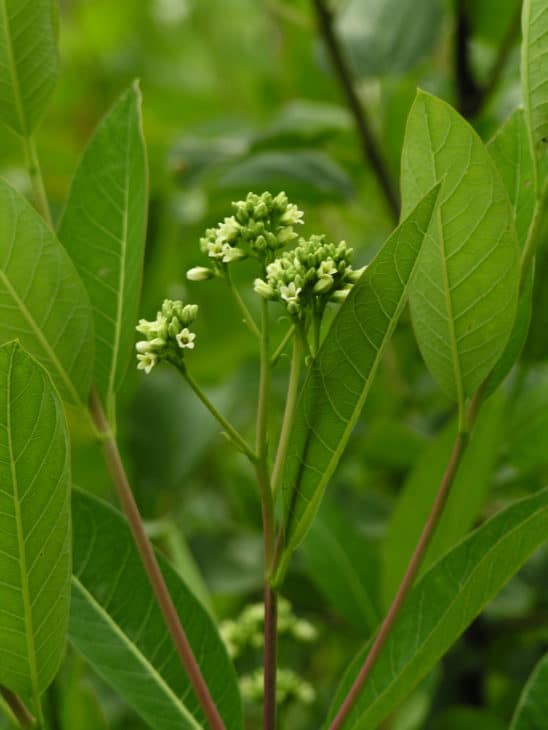
Poisonous dogbanecan grow up to two meters tall in Alabama and has small, white flowers. All parts of the plant are poisonous if ingested, and contact with the skin can cause irritation. Dogbane is often found in wooded areas, and it is sometimes used as an ornamental plant. Symptoms of poisoning include vomiting, diarrhea, and collapse. With prompt treatment, most animals recover well from poisonings.
19. Four o’clocks/Marvel of Peru (Mirabilis jalapa)
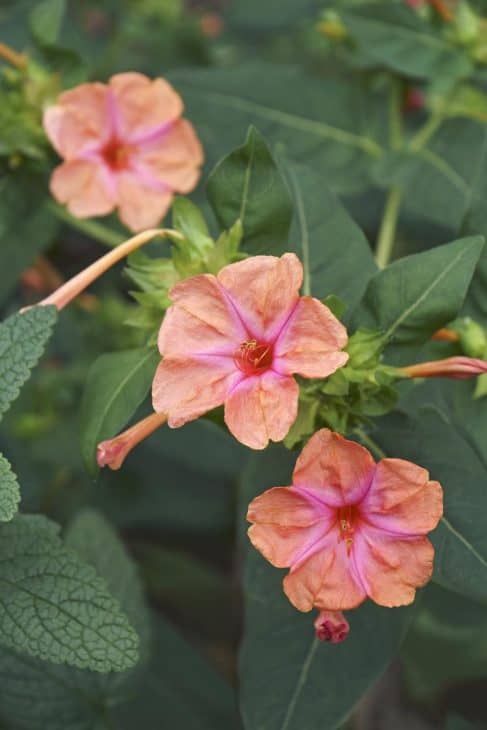
The Poisonous Marvel of Peru is a plant that gets its name from its incredibly toxic properties. Every part of the plant is poisonous, and it has been known to kill humans and animals alike. The plant is native to Peru, but it can now be found in tropical regions all over the world. The toxin in the plant is called saponin, and it causes severe gastrointestinal distress, vomiting, diarrhea, and even death when ingested in large quantities.
20. Foxgloves (Digitalis)
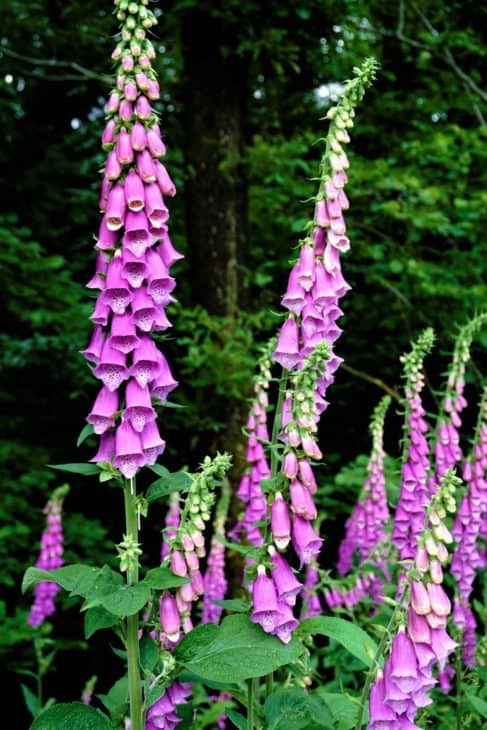
Foxgloves are a common sight in English gardens, with their tall spires of colorful flowers. However, these beautiful blooms are actually quite poisonous. All parts of the foxglove plant contain digitalis, a substance that can have dangerous effects on the heart. It is important to be aware of the risks before adding them to your garden because symptoms of foxglove poisoning include vomiting, diarrhea, dizziness, and confusion.
21. Hyacinth (Hyacinthus)
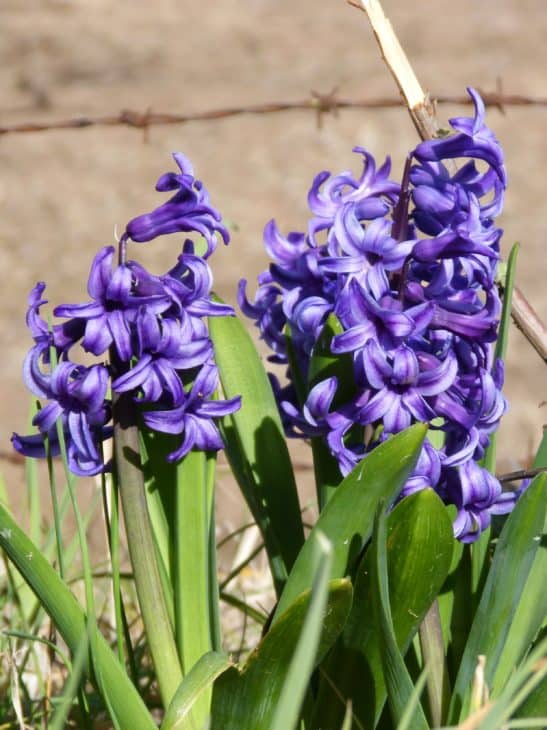
The poisonous hyacinth is a beautiful but deadly plant. Native to South America, it has found its way to many other countries, where it is often grown as an ornamental plant. All parts of the plant are poisonous, and the poison is particularly potent in the bulbs. Symptoms of poisoning include nausea, vomiting, and abdominal pain. In severe cases, the poison can cause paralysis and death.
22. Rosary Pea (Abrus precatorius)
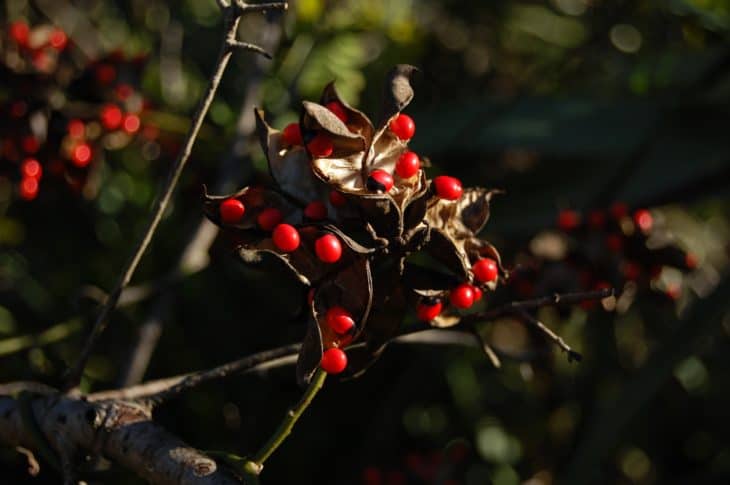
The poisonous rosary pea is a plant that grows in tropical climates. The plant produces a bright red fruit that is about the size of a pea. Inside the fruit is a black seed that contains a poison called abrin. Abrin is a toxic compound that can cause severe illness or death if it is ingested. Symptoms of abrin poisoning include vomiting, diarrhea, and seizures.
23. Water Hemlock (Cicuta)
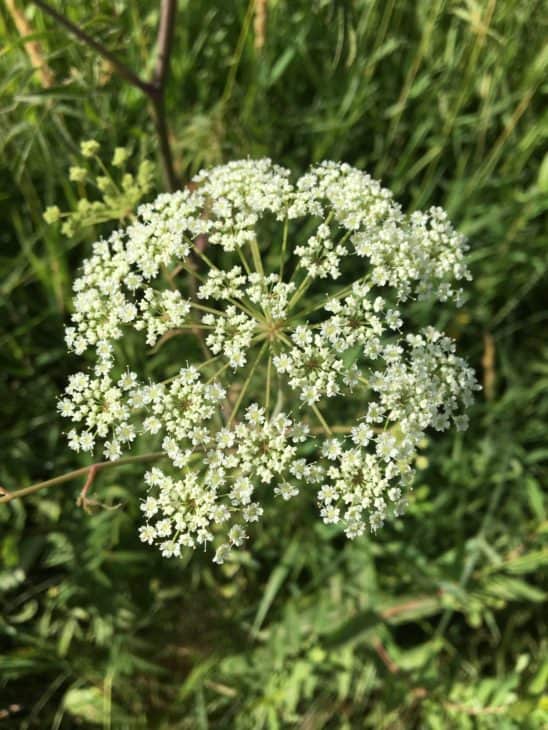
Poisonous water hemlock is a plant that grows in wet areas, such as marshes, ponds, and ditches. It is a member of the carrot family and can grow up to six feet tall. All parts of the plant are poisonous, but the root is the most toxic. Poisonous water hemlock contains cicutoxin, a compound that affects the nervous system. Symptoms of poisoning include seizures, vomiting, and coma.
24. American Yew (Taxus canadensis)
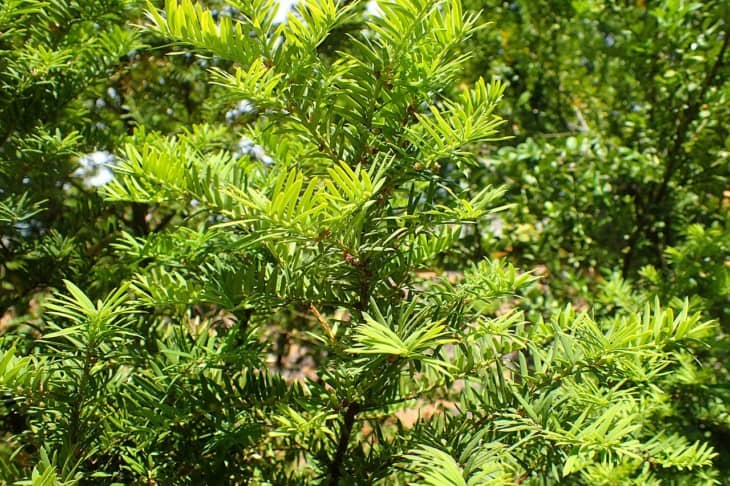
The American yew is often used as an ornamental plant in Alabama. The American yew is a beautiful tree, but it is also poisonous. All parts of the tree are toxic, and ingesting even a small amount can be deadly. The poison affects the heart, and symptoms include arrhythmia, hypotension, and bradycardia. There is no known antidote, and treatment focuses on supportive care.

